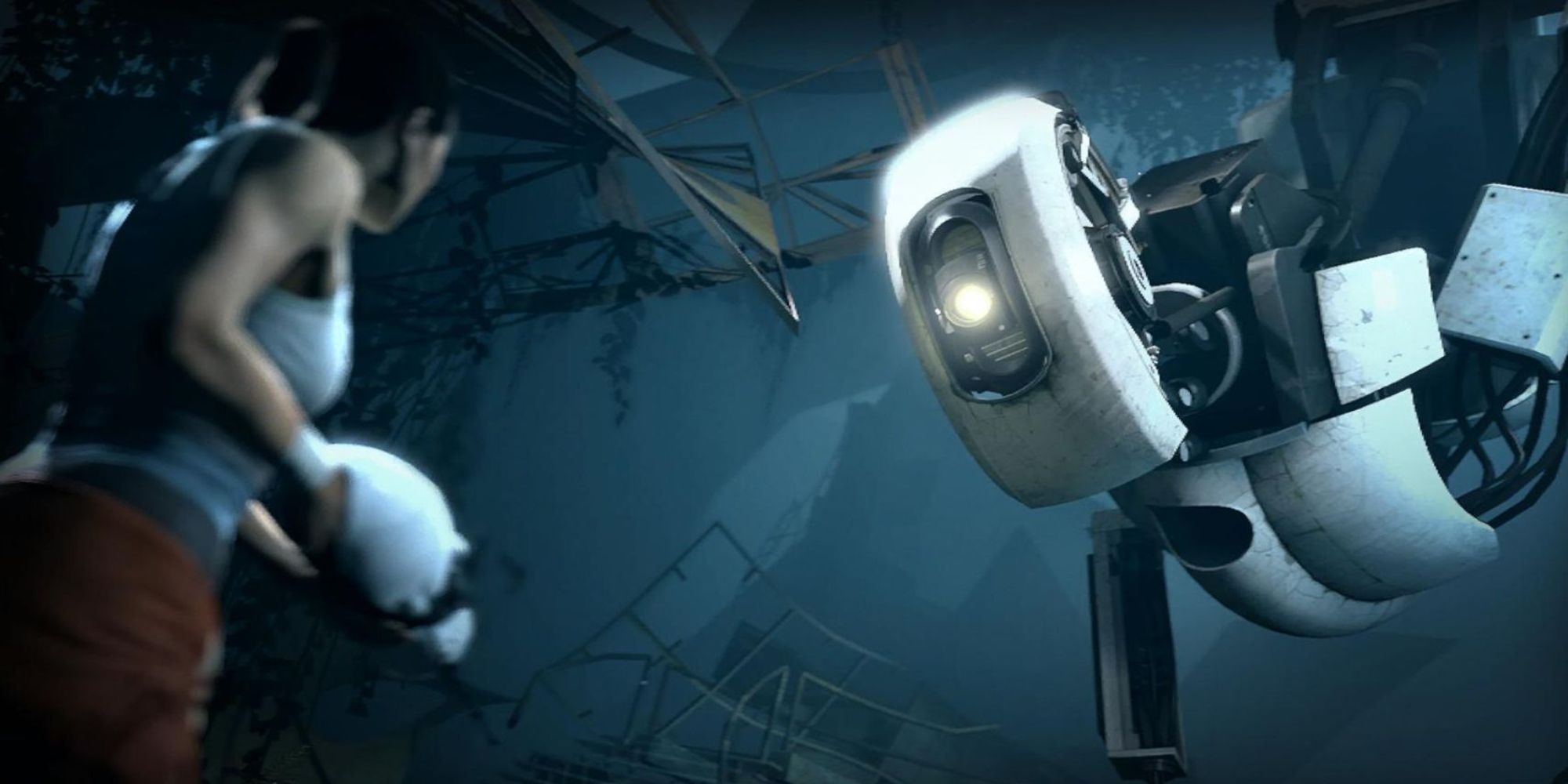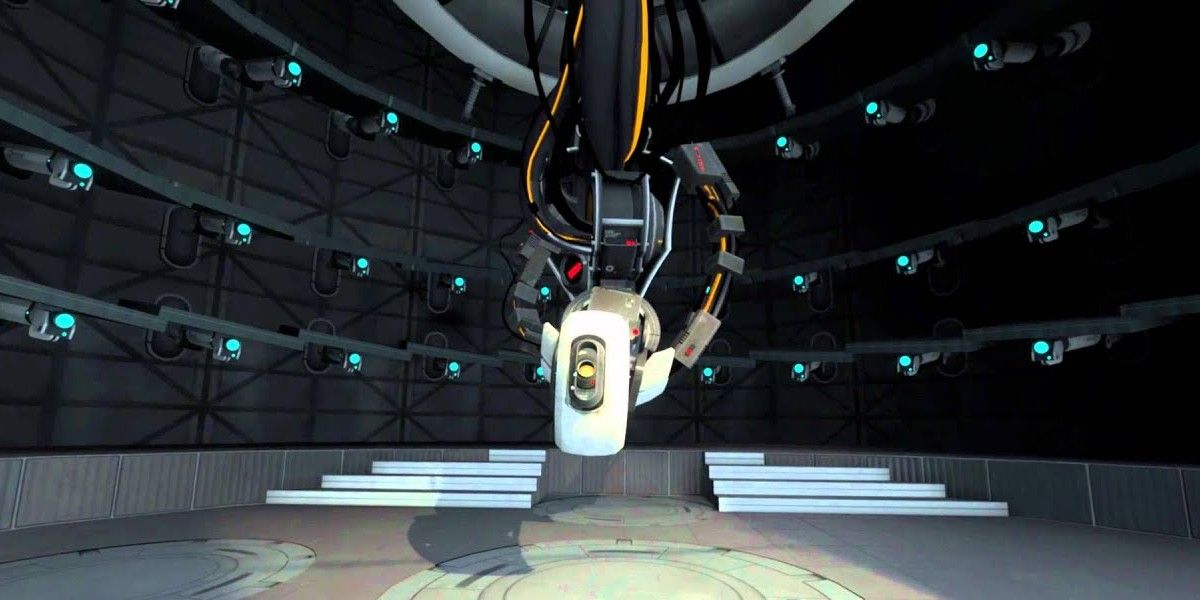Think of Portal, and you probably think of two things: the maniacal AI computer GLaDOS and that infamous “cake is a lie” meme, now repeated to the point of ad nauseam. But you may also notice Portal’s distinct lack of human bodies other than that of the silent protagonist Chell—and even then you’ll only be able to catch a glimpse of her via strategically placed portals. In other words, she’s effectively rendered invisible, not typically meant to be seen. Even the game’s other playable characters aren’t humans, but two robots named Atlas and P-Body who, when inevitably destroyed and crushed by the various machinations in the Aperture Science labs, would just be reduced to metal scraps to be rebuilt and revived later.
This lack of bodies in Portal is explained, in the game, by the fact that everyone who used to work here has either managed to flee the labs when GLaDOS forcefully took control of and locked down the facility, or perished as ill-fated test subjects and employees. And yet we see no remnants of their corpses; the labs are immaculately polished, sterile and pristine, and even in the unseen and much more dingy backstages of the test chambers there are still no traces of human remains. This is in stark contrast to the overpopulation of Half-Life, which takes place within the same universe as Portal, where humans and bodies can be found at most locales. In Portal, it’s almost as if humans have been eradicated, wiped out of existence.
All these may just be chalked up to GLaDOS’ own disgust at, and rampant erasure of, humanity in general, as she furiously and gleefully puts her human test subjects through numerous rounds of testing. To be fair, GLaDOS does have ample reasons to do so. Even as a supercomputer, GLaDOS is herself enslaved, ultimately unable to escape the trenches of the decrepit Aperture labs. Her very presence, too, is inextricably tied to humanity; in other words, GLaDOS feels extremely human, at least when compared to her rogue AI peers from other games. Her dialogue contains little reference to her nature as a computer, and this is largely intentional, according to the writers of the game. “When GLaDOS is talking to you, one of the rules I had is that she shouldn’t talk to you like a computer. She shouldn’t be all like, ‘Oh my nuts and bolts.’ She’s got this computer voice and she is a computer, but she’s talking to you like a regular person [...] We’re just trying to make her sound like a person who is angry at you and is manipulative [...],” said Erik Wolpaw, one of Portal’s writers, in an interview with Game Developer.
And while not strictly female—she’s not an organic being after all—GLaDOS is coded as such due to her voice and distinctly feminine appearance, the curves of her chassis and cables on her body resembling, perhaps unintentionally, a bound woman hung upside down (developers have said that her design was originally inspired by the Birth of Venus painting, her physical appearance resembling the Roman goddess of love, beauty and desire herself). Then there’s her backstory, which is intrinsically tied to Aperture Lab’s secretary Caroline, and whose consciousness was somehow preserved and forced into GLaDOS against her will by the CEO of Aperture Lab, Cave Johnson. In a world devoid of humans, GLaDOS is paradoxically the closest thing we have to a human presence—even serving as a companion to Chell in the second game.
In the Half-Life universe, the bulk of the calamity was attributed to the invasion of extra-dimensional species, accidentally introduced to Earth by Gordan Freeman in the first game. Yet it’s Portal that suggests that humans were simultaneously responsible for the series’ catastrophic events, while also weaponised as tools to advance GLaDOS’ agenda. Rather than the inhuman, nebulous threat of Half-Life’s antagonists, humanity is both the oppressor and the oppressed in the events of Portal. Humans, when wielded by GLaDOS before the events of Portal, are merely tools for advancing the lab’s technology against the competing lab Black Mesa, and for fueling GLaDOS’ sadism, the agency and existence of humanity systematically eliminated. This is how bodies are dehumanised to the point of non-existence, until the reminder of our very vaguely human existence is, ironically, a supercomputer that is hell bent on killing all flesh and blood.


